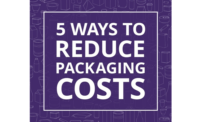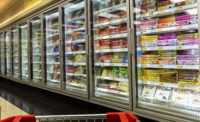Creative Ways to Manage Packaging Costs

Image courtesy of GP Hummingbird

Images courtesy of GP Hummingbird


Cost pressures can hit a business at any time and for a variety of reasons — labor, freight, energy and changing regulations, among others. While most brands will handle rising costs by absorbing or passing them along to consumers, there is a third solution well worth considering: working with your packaging suppliers to find alternatives to help ease cost pressures.
In fact, three areas where customers should consider working with their suppliers include:
- Rethinking the printed liner choice and/or overall box structure requirements
- Rethinking the graphical art to optimize for cost in printing or converting
- Rethinking the supply chain requirements
Substrate Changes or Box Redesign
For graphical print, much of the cost comes in the print liner. In many cases, there is an opportunity to choose a lower cost liner grade or a lighter weight option while still meeting the overall box performance requirements. For example, you may be able to substitute a 33-pound clay coated (Kemi) liner where you have been using 38-pound. Depending on your specific needs, you might be able to shift from a high-end Kemi grade to a Kemi coated alternative, or possibly even an uncoated white top or brown kraft solution. Hummingbird is experimenting with digitally printing high graphic images directly onto uncoated white and brown kraft and completely eliminating spot labels.
Art Redesign
Because digitally printed corrugated is still new to some market segments, most packaging art is designed in a way that is optimized for offset or flexo and their respective downstream die-cutting and finishing processes. Each of these printing processes has its own guidelines for resolution, registration, color and converting tolerances, and the art is created to perform well within those constraints.
Making a move to digital print doesn’t require any changes to designs that were created for flexo or offset, but it does present opportunities for optimization. Digital print is generally better at reproducing photo-quality images, graphics and patterns, but is not as adept at the solid fills that are common design features for flexo and offset processes. Those solid fills are also not optimal from a cost perspective, since digital ink is often more expensive than litho or flexo ink. Optimizing design for digital could be as simple as removing wasted ink on flaps or other unseen areas of the box, or it could be a complete redesign that replaces static blocks of color with engaging photos and patterns. Either option helps customers manage costs without losing anything in terms of the quality of the finished box.
Supply Chain Optimization
There are many factors to consider when aiming to optimize your packaging supply chain. Balancing the need for sufficient box supply with the cost of warehousing a large inventory can be a challenge. Large orders may reduce package production and shipping costs, but they also increase the chance that you will have significant obsolete inventory.
Ideally, suppliers can help optimally balance these considerations. Maybe multiple SKUs can be aggregated into a single print run to optimize production and fill a truckload. Maybe the supply chain can be optimized to reduce the freight impact. Perhaps a different lead time, even by a couple of days, could reduce production or shipping costs. The key is to have an open mind and engage your suppliers about the options that might be available to help achieve your packaging objectives.
Looking for a reprint of this article?
From high-res PDFs to custom plaques, order your copy today!








